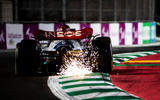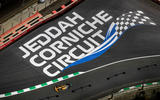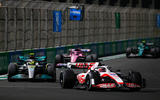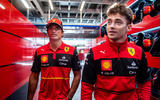The Formula 1 2022 rules revolution has started encouragingly. Both the Bahrain and Saudi Arabian Grands Prix produced dramatic fights for victory between Red Bull’s Max Verstappen and Ferrari’s Charles Leclerc. These rank among the most dramatic back-and-forth battles for victory of 21st century F1.
The competitive order has been shaken up, with last year’s worst two teams, Haas and Alfa Romeo, now strong top 10 runners and long-time dominant force Mercedes-AMG no longer a victory threat. The financial playing field has also been made more even thanks to the cost cap that limits how much teams spend on designing, developing, building and running cars to a baseline figure of $140 million (£107m) per year. The cars also look good, replacing the Frankenstein’s Monster mish-mash that cars had become with cleaner aerodynamics and more pleasing proportions.
But correlation does not equal causation. The objective of the new technical regulations, which reintroduced powerful ground-effect venturi tunnels outlawed for 1983, was to improve what F1 MD and tech boss Ross Brawn calls the ‘raceability’ of the cars. So have these changes really worked?

The consensus among drivers and teams is that significant progress has been made in the number one objective of the rules. This was to reduce the turbulent airflow wake created by a car. ‘Dirty air’ compromises the aero of a following car, costing it downforce and causing it sliding around. The consequence is less grip and overheating tyres, which is not conducive to launching an overtaking move.
The changes are the result of the most comprehensive research programme conducted by F1 in association with the FIA. The simplified aerodynamics with the fussy flicks, vanes and elaborate shapes outlawed have resulted in what McLaren technical director James Key describes as “massive brute-force [aero] surfaces, a huge front wing, a massive floor which is very powerful and far less complexity above that”.























Join the debate
Add your comment
The racing has also been better because the revised overtaking rules stop Max pushing drivers off first chance he gets, so the battles go on longer and are more entertaining. Massi needed to grow some cojones last year and nip the problem in the bud, but he repeatedly failed.
First two races between Max and Charles have been epic!
The real Litmus test would be Monaco, no lengthy periods of full throttle, will passing be safer there?, it's a show race anyway, a Track where Verstappen is likely to crash out of?, Pitstops are more critical.
Exciting, last 3 races all involve the safety car and pit lane timinig being the key to winning. Lets see if the excitment is there after a couple of races without a SC
But yes the new regulations are allowing the cars to follow closer but most overtakes still needed the DRS affect.